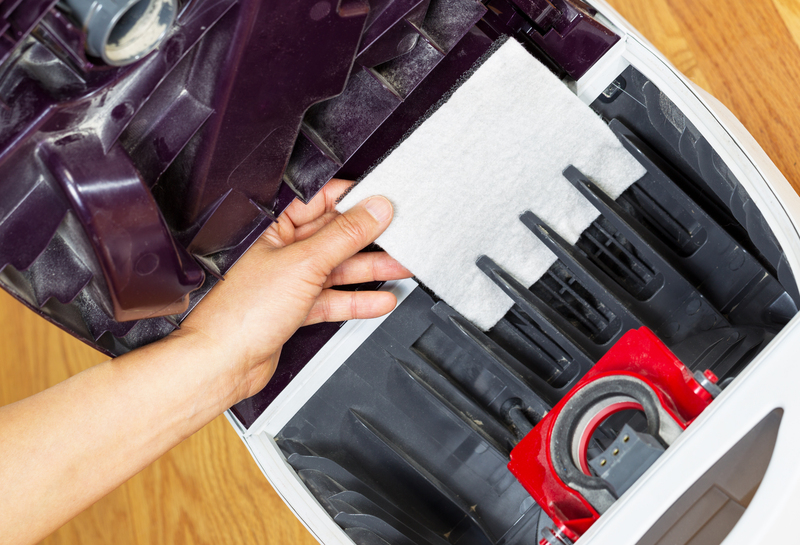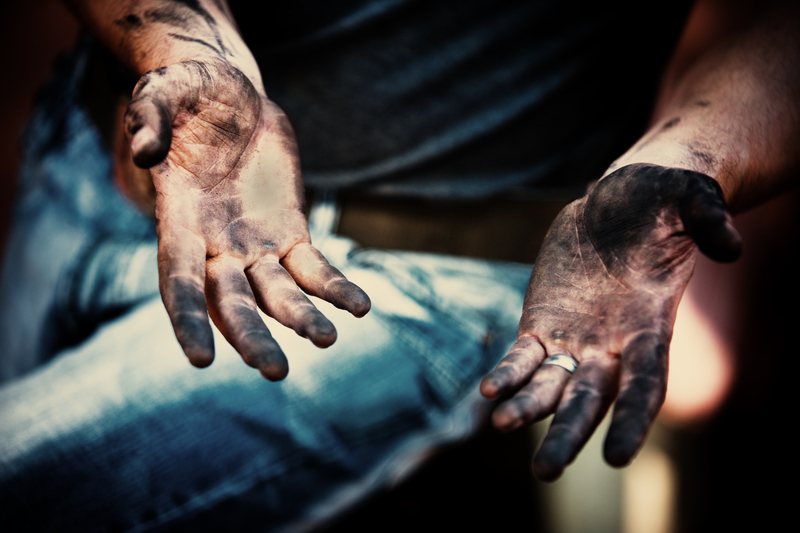Quick and Effective Ways to Clear Burnt Residue on Your Stovetop
Posted on 19/09/2025
Quick and Effective Ways to Clear Burnt Residue on Your Stovetop
Burnt residue on your stovetop can be a stubborn and unsightly issue for any home cook. Whether you own a modern glass cooktop or a classic gas range, learning quick and effective ways to clean burnt residue from your stovetop is essential. Not only does it make your kitchen look pristine, but it also helps your appliance run more efficiently and last longer. In this comprehensive guide, we'll explore proven methods, easy household solutions, and expert tips to clear burnt-on stains and residue from all types of stovetops.

Why Cleaning Burnt Residue Matters
Keeping your stovetop free from burnt residue is crucial for both hygiene and the longevity of your appliance. Burnt-on stains can harbor bacteria, affect the flavor of your food, and even become a fire hazard. Additionally, removing scorched messes promptly prevents permanent damage to delicate surfaces like glass and enamel.
- Prevents persistent odors and smoke during cooking
- Reduces health risks by eliminating bacteria and buildup
- Maintains your kitchen's visual appeal
- Protects your stovetop surface from scratching and discoloration
Let's dive into the most effective methods for cleaning burnt stovetop residue quickly and safely.
Understanding Different Types of Stovetops and Burnt Residue
Before you begin scrubbing, it's important to know your stovetop's surface. Different materials require distinct cleaning approaches:
- Glass or Ceramic: Smooth, glossy, and prone to scratching.
- Enamel: Durable but can chip if treated too harshly.
- Stainless Steel: Resistant to corrosion but shows streaks and fingerprints.
- Gas Burner Grates: Typically cast iron, more tolerant of abrasive cleaning.
Identifying the burnt residue--whether it's caramelized sugar, spilled sauces, or greasy splatters--also guides your cleaning method.
Quick Stovetop Cleaning: General Steps for All Surfaces
- Always wait until the stovetop is cool before cleaning.
- Wipe loose debris with a soft, damp cloth to avoid spreading grime.
- If possible, remove burner grates and knobs for separate cleaning.
- Use the gentlest method first: heavy scrubbing should be a last resort.
Now, let's explore the quick and effective stovetop cleaning techniques for different types of residue and stovetops.
How to Remove Light Burnt-On Residue
1. Hot, Soapy Water Method
The simplest way to tackle minor burnt residue on your stovetop is with hot, soapy water:
- Pour a few drops of dish soap onto the burned area.
- Soak a clean sponge or rag in hot water and lay it on the residue for several minutes.
Tip: This helps to loosen stubborn bits without harsh chemicals. - Wipe away the softened residue, repeating as necessary.
This method is safe for most stovetop surfaces, including glass, enamel, and stainless steel.
2. Baking Soda Paste Solution
For slightly tougher stains, baking soda is a gentle but powerful abrasive:
- Mix 2 tablespoons of baking soda with a little water to form a thick paste.
- Spread the paste over the area with burnt residue.
- Let it sit for 15 minutes to lift the stain.
- Wipe the paste and loosened residue away with a damp microfiber cloth.
Baking soda's non-scratch properties make it ideal for sensitive cooktop surfaces.
Tackling Tough Stovetop Residue
3. Vinegar and Baking Soda Chemical Reaction
When faced with stubborn, burnt-on gunk, the combination of vinegar and baking soda can help:
- Sprinkle a generous layer of baking soda over the affected area.
- Spray or pour white vinegar onto the baking soda--it will bubble and fizz, breaking down the burnt residue.
- Let the mixture sit for 15-20 minutes, then scrub gently with a sponge or soft brush.
- Wipe clean with a damp cloth, repeating if necessary.
Vinegar naturally cuts grease and removes odors, while the fizzing action lifts even deeply scorched food debris.
4. Razor Blade or Scraper for Glass Cooktops
For glass and ceramic cooktops plagued by extra-stubborn burnt spots, a razor blade scraper can be used with care:
- Hold the scraper at a 30 to 45-degree angle.
- Gently glide it over the burnt residue without digging into the glass.
- Wipe away loosened debris, then buff the area with a soft cloth.
Never use this technique on enamel or stainless steel surfaces! Always check your manufacturer's recommendations before using sharp tools on your cooktop.
5. Commercial Stovetop Cleaners
If household solutions aren't cutting it, look for products designed for your specific type of stovetop.
- Glass cooktop cleaners and cream-based abrasives are safe for delicate surfaces.
- Enzyme-based sprays break down organic burnt residue quickly.
- Degreasers can tackle both carbonized food and sticky, oily grime.
Always spot-test commercial cleaners to ensure compatibility with your stovetop.
Deep Cleaning Gas Stove Grates and Burner Caps
Gas stove grates and burner caps often collect the toughest burnt residue. Here's how to get them sparkling clean:
Soaking Method
- Remove grates and caps once the stove is cool.
- Soak them in hot, soapy water for at least 30 minutes.
- Scrub with a stiff brush or non-abrasive scouring pad.
- For persistent stains, make a paste of baking soda and water, scrub it in, then rinse well.
- Let dry completely before replacing.
For Severe Build-Up: Ammonia Bag Technique
- Put the grates in a sealable plastic bag with a quarter-cup of ammonia.
- Seal tightly and let sit overnight away from food and children.
- Open the bag outdoors and rinse the grates thoroughly before use.
_Ammonia fumes can be dangerous; always ventilate well and wear gloves!_
Natural, Eco-Friendly Stovetop Cleaning Solutions
Looking for quick and effective stovetop cleaning with ingredients from your pantry? Try these green methods:
- Lemon juice: The acid helps break down burned food and leaves a fresh scent.
- Salt: Coarse salt acts as a mild abrasive and can be mixed with vinegar for extra cleaning power.
- Club soda: The carbonation can help loosen stuck bits when applied to warm (not hot) residue.
These alternatives are safe for most surfaces and are environmentally friendly.
Tips to Prevent Burnt Residue Build-up
- Wipe spills immediately. Clean up liquid and food spillage as soon as the stovetop cools down.
- Use lids to minimize splatter.
- Use burner liners or stove protector mats for easy catch-and-dispose of debris (ensure they are oven-safe for your model).
- Adopt a quick daily wipe-down routine to keep grease and spills from accumulating.
Prevention is the best cure when it comes to stovetop maintenance!
Handling Stubborn and Old Burnt Residue
If you've been dealing with burnt residue on your stovetop for weeks or months, here's an intense method that combines several cleaning tricks:
- Start with a baking soda paste, letting it sit for 30 minutes.
- Spray with vinegar and allow it to fizz for another 15 minutes.
- Scrub with a soft brush or sponge, circular motions work best.
- For extremely tough tars, carefully use a razor scraper or a commercial ceramic cooktop cleaner as recommended.
Repeat as needed--persistent stains may require multiple treatments. Never use steel wool or metal brushes on delicate surfaces!
Common Mistakes to Avoid
- Cleaning when the stovetop is still hot--this can cause burns or warp the surface.
- Using harsh chemicals not intended for stovetops, like oven cleaners on glass surfaces.
- Scrubbing with steel wool, metal pads, or abrasive powders--these will scratch most cooktops.
Essential Tools for Quick Stovetop Cleaning
- Microfiber cloths or soft sponges (non-abrasive)
- Baking soda and white vinegar
- Dish soap & warm water
- Razor blade scraper (for glass/ceramic)
- Soft brushes or old toothbrushes
- Commercial cooktop cleaners (as needed)
Frequently Asked Questions About Clearing Burnt Stovetop Residue
How often should I clean my stovetop?
For best results, wipe your stovetop daily and perform a deep clean at least once a week. Quick clean-ups after each use prevent residue from becoming burnt and difficult to remove.
What if the burnt residue smells bad?
Use vinegar or lemon juice to neutralize odor. Removing burnt residue promptly helps prevent lingering smells.
Can I use bleach to clean burnt-on stains?
Bleach is not recommended for most stovetops as it can damage the finish and create harmful fumes, especially when mixed with other cleaners.
How do I clean around gas burners safely?
Always turn off the gas and electricity before cleaning. Avoid getting water or cleaning solutions down into the ignition elements or wires.

Conclusion: Keeping Your Stovetop Shining
Clearing burnt residue from your stovetop doesn't have to be a dreaded chore. By using the right combination of soapy water, baking soda, vinegar, and specialized tools, you can make your stove look new in minutes.
Remember, a little regular maintenance prevents tough stains from setting in--and keeps your kitchen looking and smelling great. If in doubt, always consult your stove's manufacturer guidelines for safe cleaning.
Mastering these quick and effective stovetop cleaning tricks not only safeguards your appliance investment but ensures healthier, more enjoyable cooking for years to come.
Ready to clear that burnt-on mess? Grab your cleaning supplies and see just how easy it is to transform your stovetop today!





